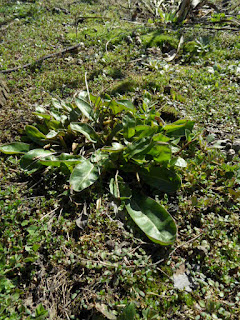Hope you enjoy the native prairie plants in this garden year round. When adding a new plant to your garden, remember to Go Native!
A Little Background
This garden was established in 2013 with gardeners in mind. The design of the garden was to showcase plants as they might be used in the home landscape rather than as a restored prairie. Thereby encouraging and exposing you to plants you might add to your garden.
Prairie loving plants were selected for this sites' location, which offered full sunlight and sandier soils. More often than not, prairie/native plants are drought tolerant and long lived so they don't need a lot of fuss. Here they are pretty much on their own at this little oasis.
Also as a favorite of local pollinating insects and birds, they benefit our ecosystem. Much preferred over hybridized varieties.
How to Find Your Favorite Plants
You will find in this blog a separate listing of each of the twenty one plants growing at Midway Prairie Garden. Just click on the common name and find out more. When you are visiting the garden you'll see wood plaques with the common plant name in yellow.
 The information in this blog also includes the botanical name of the plant. This is very important to know when you want to find and purchase the same exact plant. Common names are often used for hybrids and other varieties of plants. So the exact botanical name will get you the exact same plant.
The information in this blog also includes the botanical name of the plant. This is very important to know when you want to find and purchase the same exact plant. Common names are often used for hybrids and other varieties of plants. So the exact botanical name will get you the exact same plant.A brief description is included, aimed at gardeners, highlighting some of the attributes of specific prairie plants for your home landscape. Plus the benefits to pollinators and nectar loving insects, and birds, which also enjoy the plant as a food source.
Photos of the prairie plants are included showing the blooms and seasonal interest. The plan is to add more photos as they become available. If you've got a great photo to share let us know.
Here are some links to the sources used for the descriptions, in addition to a couple of great places for purchasing prairie/native plants. Please check out your local garden centers first. It's always good to support your own community businesses when you can.
Note: If you happen to not live in the same region, try contacting the university system in your state. Ask for an agriculture extension office near you, to obtain more information on native plants suitable for your area.
Your comments and questions are welcome. Please be kind and considerate when posting to this blog site since it becomes public information. Your patience is appreciated. Thank you.
Sources for ordering and more information:
www.prairienursery.com
www.prairiemoon.com
www.wildflower.org
wisflora.herbarium.wisc.edu
Be sure to also check out and visit:
www.Bike4trails.com for Great River State Trail map and connecting trails.
www.dnr.wi.gov search for "Midway Railroad Prairie State Natural Area" and "Great River State Trail" and "Perrot State Park", for information on other great places to visit.
www.explorelacrosse.com area lodging and visitor information.
www.trempealeau.net local lodging and visitor information.
Special Thanks to:
Great River State Trail Friends
Volunteer Master Naturalist Program
Perrot State Park

















































